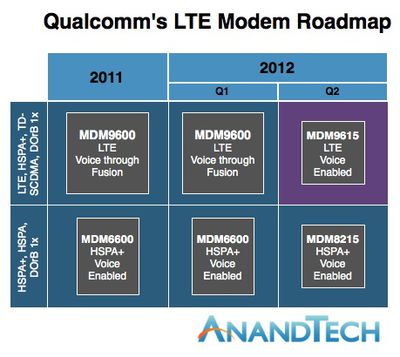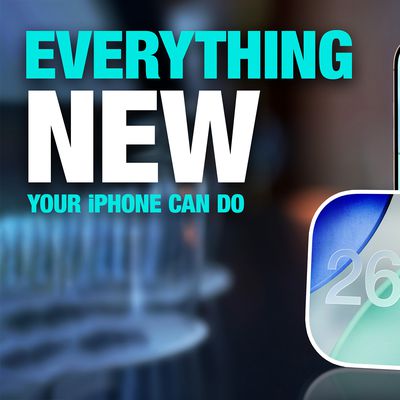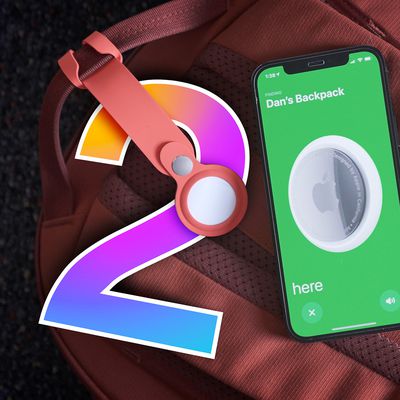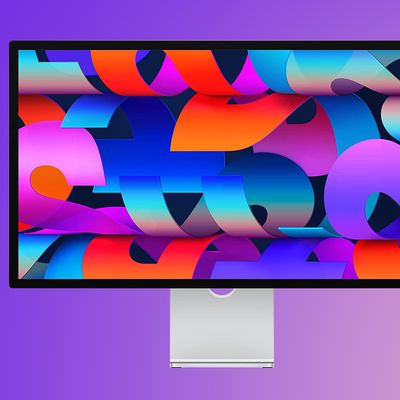Qualcomm Supply Issues Providing Further Fuel for Speculation of Fall iPhone Release
Qualcomm yesterday warned analysts that it is experiencing supply issues with some of its advanced mobile phone chips, particularly its new 28-nm modem chips set to power the next wave of LTE devices.
"At this stage we cannot secure enough supply to meet the increasing demand we are experiencing," Chief Executive Paul Jacobs told analysts on a conference call, adding that the issue would limit revenue growth this year. [...]
"Demand went so far ahead of availability that we've decided to start spending more money to get more supply as soon as possible," [Chief Financial Officer Bill Keitel] told Reuters. "Any time we can't make a customer totally happy I'm going to worry. You don't want to give a customer a reason to go elsewhere."
As a result of the issues, analysts believe that vendors may have to slow their rollout of new devices, and a report out today from Piper Jaffray's Gene Munster predicts that the next-generation iPhone will arrive in October.
 Qualcomm's LTE modem roadmap (Source: AnandTech)
Qualcomm's LTE modem roadmap (Source: AnandTech)Munster had previously been modeling for an August launch as a hedge between those thinking the device may arrive in June and those thinking it will arrive in a September-October timeframe similar to the iPhone 4S. Apple is expected to use Qualcomm's 28-nm MDM9615 modem chip in its next-generation iPhone to provide LTE data and voice services, and the chip appears to be one of those impacted by Qualcomm's supply issues.
QCOM will likely support an Apple iPhone launch in October. Based on our checks, we believe the design win momentum of QCOM's 28nm products has been exceptionally strong and a 28nm LTE baseband is likely designed into the next iPhone. QCOM's supply issue likely pushes the launch of the iPhone to October. Based on the increased capital spending this year from TSMC and QCOM's efforts over the last quarter to port its 28nm designs to UMC and probably Global Foundries, we think QCOM will have the capacity to support a Q4 LTE iPhone 5 launch. Moreover, the slow wireless infrastructure spending in 1H:12 is also likely a result of the lack of availability of a low power 28nm LTE baseband modem.
Apple may have been planning for a September-October iPhone launch all along, but Qualcomm's issues seem to make it less likely that those holding out hope for an earlier launch will see something closer to the June-July timeframe that had been the traditional launch window prior to last year.
Munster believes that it is "irrelevant" whether the iPhone launches in August as his model currently predicts or in October, with the primary driver of success being whether the upgrade is a compelling one for consumers. And with the next-generation iPhone expected to offer LTE support and carry a redesigned form factor, it seems likely that it will be an attractive device for both new and upgrade customers.
Popular Stories
Apple seeded the second iOS 26.2 Release Candidate to developers earlier this week, meaning the update will be released to the general public very soon.
Apple confirmed iOS 26.2 would be released in December, but it did not provide a specific date. We expect the update to be released by early next week.
iOS 26.2 includes a handful of new features and changes on the iPhone, such as a new...
Google Maps on iOS quietly gained a new feature recently that automatically recognizes where you've parked your vehicle and saves the location for you.
Announced on LinkedIn by Rio Akasaka, Google Maps' senior product manager, the new feature auto-detects your parked location even if you don't use the parking pin function, saves it for up to 48 hours, and then automatically removes it once...
Apple has ordered 22 million OLED panels from Samsung Display for the first foldable iPhone, signaling a significantly larger production target than the display industry had previously anticipated, ET News reports.
In the now-seemingly deleted report, ET News claimed that Samsung plans to mass-produce 11 million inward-folding OLED displays for Apple next year, as well as 11 million...
Apple today released new firmware designed for the AirPods Pro 3 and the prior-generation AirPods Pro 2. The AirPods Pro 3 firmware is 8B30, up from 8B25, while the AirPods Pro 2 firmware is 8B28, up from 8B21.
There's no word on what's include in the updated firmware, but the AirPods Pro 2 and AirPods Pro 3 are getting expanded support for Live Translation in the European Union in iOS...
Apple is about to release iOS 26.2, the second major point update for iPhones since iOS 26 was rolled out in September, and there are at least 15 notable changes and improvements worth checking out. We've rounded them up below.
Apple is expected to roll out iOS 26.2 to compatible devices sometime between December 8 and December 16. When the update drops, you can check Apple's servers for the ...
The AirTag 2 will include a handful of new features that will improve tracking capabilities, according to a new report from Macworld. The site says that it was able to access an internal build of iOS 26, which includes references to multiple unreleased products.
Here's what's supposedly coming:
An improved pairing process, though no details were provided. AirTag pairing is already...
Apple today seeded the second release candidate version of iOS 26.2 to developers and public beta testers, with the software coming one week after Apple seeded the first RC. The release candidate represents the final version iOS 26.2 that will be provided to the public if no further bugs are found.
Registered developers and public beta testers can download the betas from the Settings app on...
Apple is actively testing under-screen Face ID for next year's iPhone 18 Pro models using a special "spliced micro-transparent glass" window built into the display, claims a Chinese leaker.
According to "Smart Pikachu," a Weibo account that has previously shared accurate supply-chain details on Chinese Android hardware, Apple is testing the special glass as a way to let the TrueDepth...
Apple is working on a smart home hub that will rely heavily on the more capable version of Siri that's coming next year. We've heard quite a bit about the hub over the last two years, but a recent iOS 26 code leak provides additional insight into what we can expect and confirms rumored features.
Subscribe to the MacRumors YouTube channel for more videos.
Macworld claims to have access to an ...
Apple's next-generation Studio Display is expected to arrive early next year, and a new report allegedly provides a couple more details on the external monitor's capabilities.
According to internal Apple code seen by Macworld, the new external display will feature a variable refresh rate capable of up to 120Hz – aka ProMotion – as well as support for HDR content. The current Studio...


























